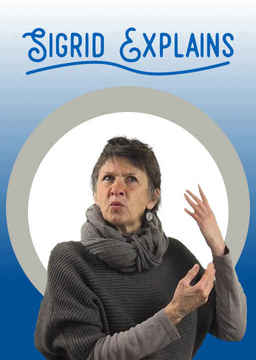









Difficulty:
 Beginner
Beginner
USA
In order not to forget anything, Luana and Austin have made a list of the clothes and other items they need to pack. Austin reads the list while Luana gathers the items, and then they discuss their strategy for getting to the airport on time.
Difficulty:
 Beginner
Beginner
USA
In English, we use a lot of phrasal verbs. Let's see how they work using some examples from the story of the Ugly Duckling.
Difficulty:
 Beginner
Beginner
USA
Booking a room by phone in a new language can be a challenge. This video will show you some typical questions you'll be asked, and how you can answer them.
Difficulty:
 Beginner
Beginner
United Kingdom, USA
Relative pronouns such as “who,” “which,” or “what” can link two “relative clauses.” Gina and Olivier review what we have learned and give us some final tips on studying English sentence structure.
Difficulty:
 Beginner
Beginner
United Kingdom, USA
This video will show you, in simple terms, the difference between an independent (or "main") clause and a dependent (or "subordinate") clause. It's important to remember than a dependent clause depends on the independent clause, and does not make sense on its own.
Difficulty:
 Beginner
Beginner
USA
Lots of English words can serve as nouns, verbs, or adjectives depending on the context. Sometimes even the pronunciation changes. Let's look at the slogan "Black Lives Matter" in both a grammatical and historical context.
Difficulty:
 Beginner
Beginner
United Kingdom, USA
A sentence can be formed from multiple independent clauses, and could in theory go on forever! But is this really a good idea? Olivier and Gina offer us some helpful guidelines.
Difficulty:
 Beginner
Beginner
United Kingdom, USA
In this video, we learn how words called “conjunctions” are used to join two ideas to make one complex sentence. These parts are known as "clauses" and can be either independent or dependent.
Difficulty:
 Beginner
Beginner
United Kingdom, USA
Using adjectives and adverbs, we can add detail and information to a basic sentence.
Difficulty:
 Beginner
Beginner
United Kingdom, USA
By adding a complement, we can form a complete sentence that is both grammatically correct and communicates meaning.
Difficulty:
 Beginner
Beginner
United Kingdom, USA
Some verbs don't require an object, while others do. In this video, we learn when a sentence is complete, and when we need to add more words.
Difficulty:
 Beginner
Beginner
United Kingdom, USA
In this lesson, you can learn about sentence structure in English.
You’ll learn how to construct all kinds of sentences in English, from the simplest possible sentences, to long, complex sentences that contain many different ideas.
Difficulty:
 Beginner
Beginner
United Kingdom, USA
Minoo and Rachel demonstrate how the same word can be pronounced totally differently in American English and British English. As you listen, consider what tendencies you have when it comes to pronunciation.
Difficulty:
 Beginner
Beginner
USA
This tutorial is for educators. The video outlines how to create a printable quiz to use with your class. It's easy!
Difficulty:
 Beginner
Beginner
USA
Here's Part 2 of the grammar lesson about using the present continuous tense to say what you and anyone else is doing right now at the moment. TV news reporter Gary Carter meets the Jones family in Central Park and finds out exactly what they’re doing today.
Are you sure you want to delete this comment? You will not be able to recover it.